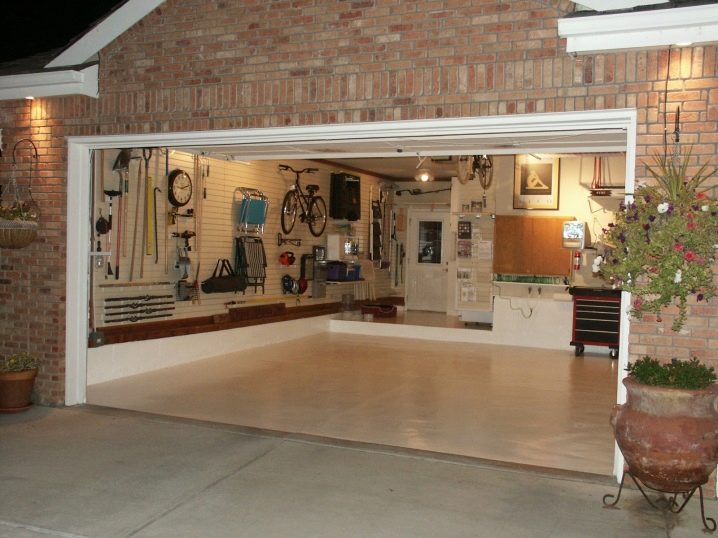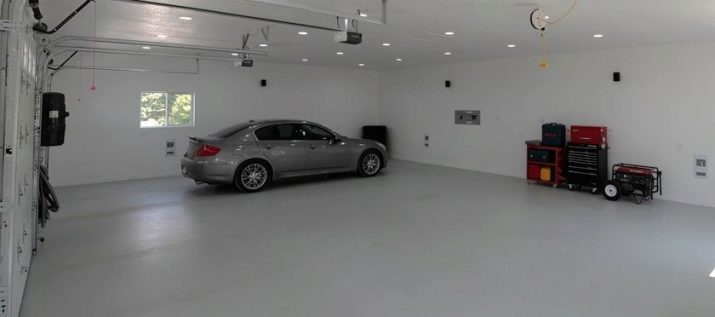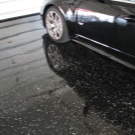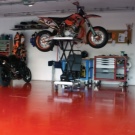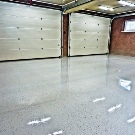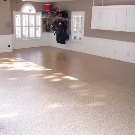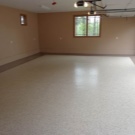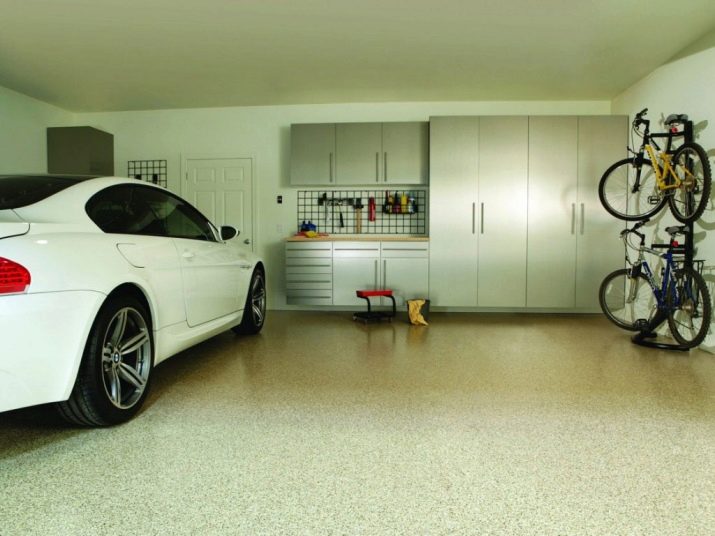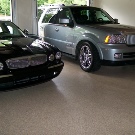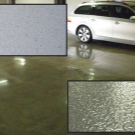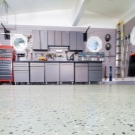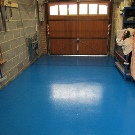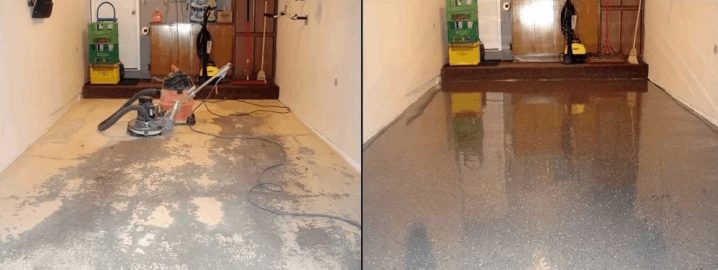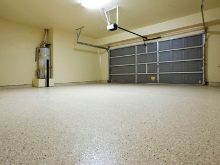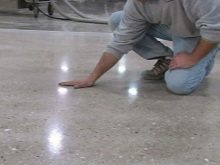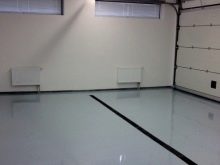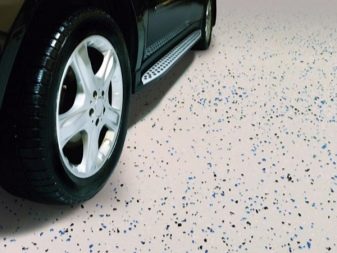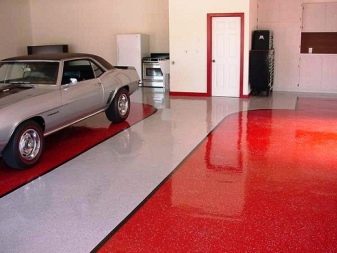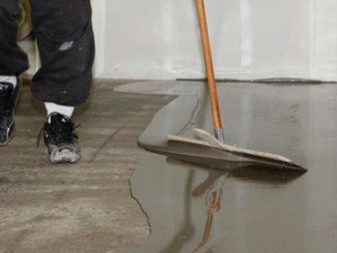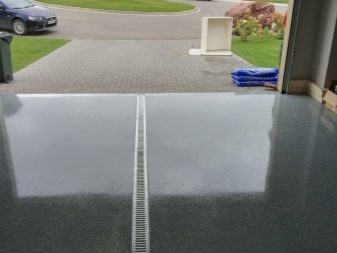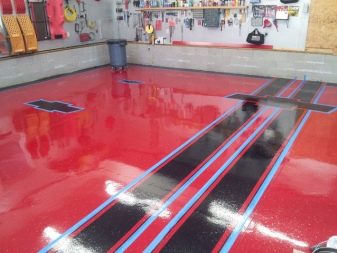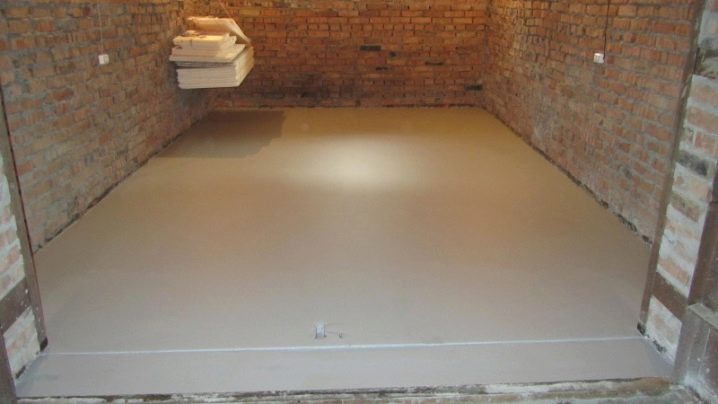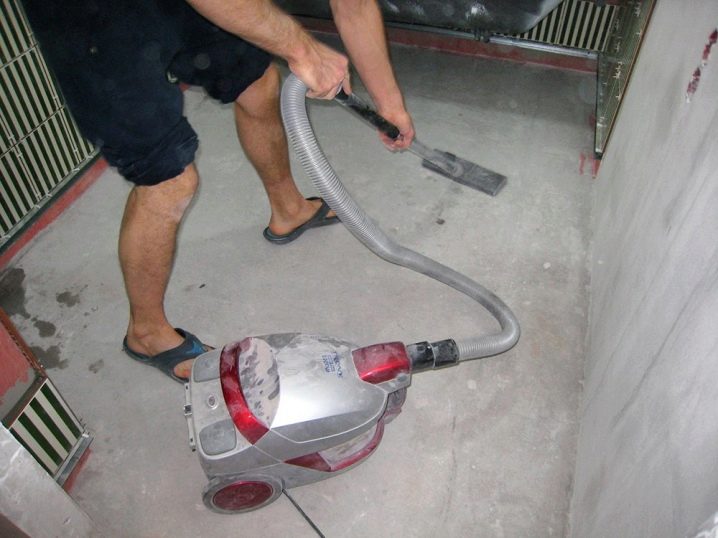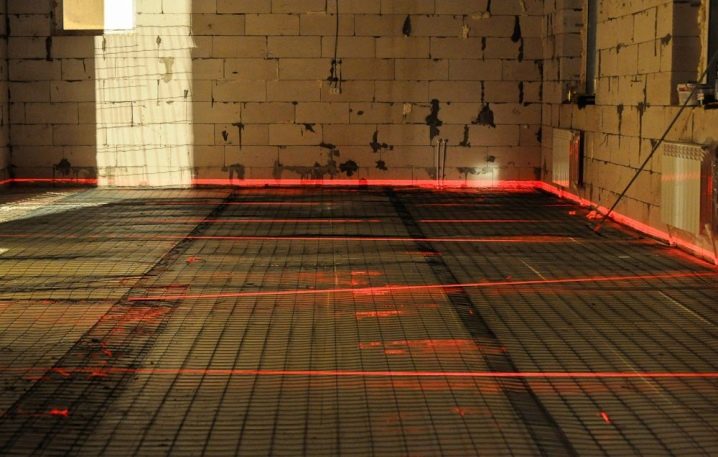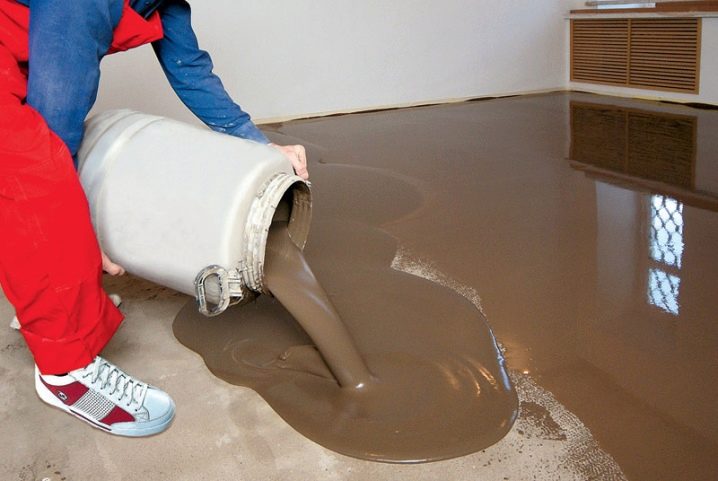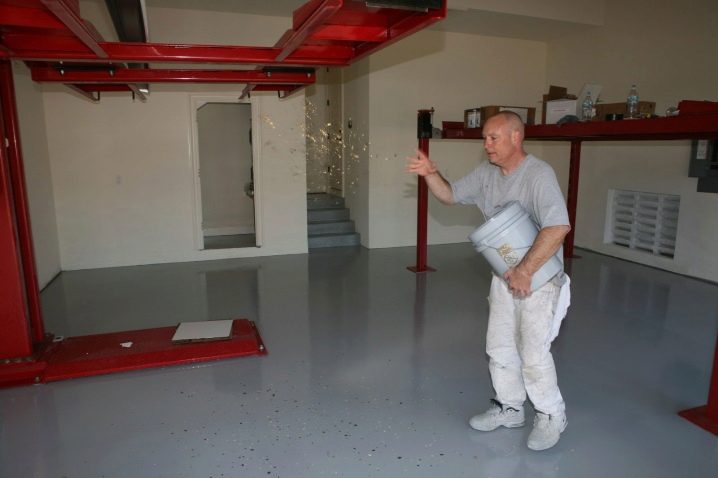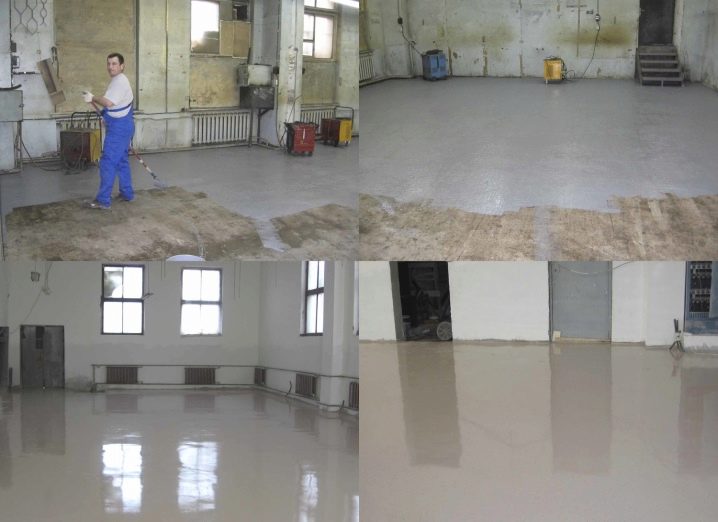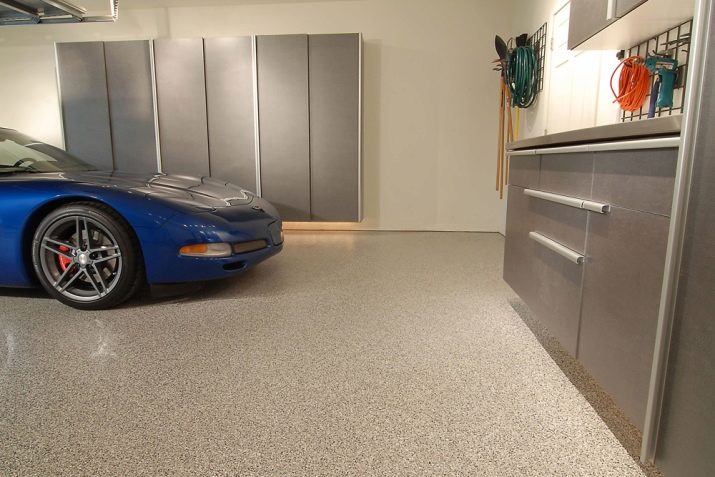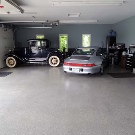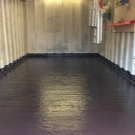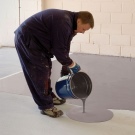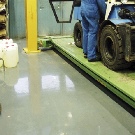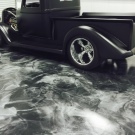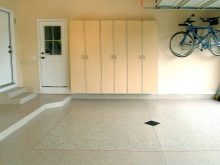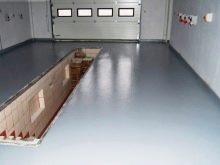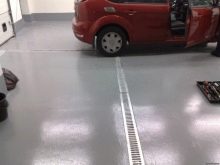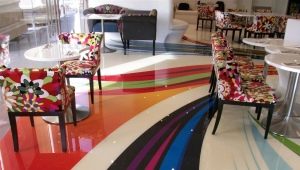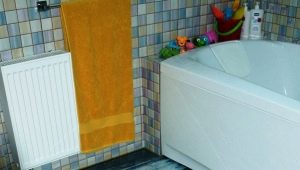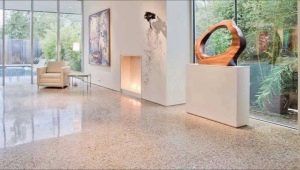Bulk floor in the garage: advantages and disadvantages
The garage is a specific room that requires special structural components that will contribute to the implementation of the main tasks of the building. This also applies to the foundation, and walls, and the floor. The latter is the main element of the whole structure, since it performs a number of important functions and is daily subject to tough use.
Special features
To create a floor with a flat and durable surface, it is better to stop the choice on the option of self-leveling self-leveling mix. This coating will be a practical and reliable solution, since it has a number of distinctive features. They consist primarily in the fact that this material was originally produced for use in industrial-type premises, where the operational aspect of the floor surface was an important aspect. However, its popularity, due to its positive properties, favored the exit of the self-leveling floor from a narrow coating, to the area of widespread use for any premises.
Self-leveling floor is used in the manufacture of screed under the floor covering, for example, under the tile, linoleum or laminate. During the formation of the screed, the option of arranging a heated floor, both electric and water, is also possible.
Besides, The distinctive properties of this material include a wide color variety.represented on the modern construction market. There is also the possibility of applying to the surface chips, which are small fragments of acrylic coloring composition. Due to their different sizes and shapes, they imitate natural materials, such as marble or granite.
One of the most important features of the self-leveling floor is hygienic, due to which the surface acquires anti-bacterial properties. This characteristic is due, primarily, to the solidity of the material structure. The pores and seams of the coating are completely absent; therefore, microorganisms and bacteria are not able to penetrate and multiply.
The composition of some mixtures include fungicidal additives that provide bactericidal protective properties of the surface.This substance not only works as a component to prevent the development of microbes, but also provides a certain barrier against the destruction of raw materials due to the detrimental effect of various fungi, algae and mold. Antibacterial properties of the coating make it possible to exploit the floors in objects, which are subject to special sanitary standards.
Advantages and disadvantages
The advantages of this coating include the following characteristics:
- wear resistance, which is maintained at the initial level over time;
- good thermal insulation performance (even for the coating with a minimum thickness);
- impact resistance, providing the ability of the surface to withstand a large weight and mechanical effects of various kinds;
- moisture resistance;
- frost resistance;
- a large selection of external design (if desired, a pattern can be applied to the surface, and using the coloring compositions, the surface can be given any desired color);
- excellent flowability of the mixture, providing a smooth fill;
- neutrality to various aggressive chemical compositions (the material will not suffer even from the oil spilled on it);
- coating resistance to vibrations (therefore, self-leveling polymer floors are recommended for rooms with a high level of mechanical vibrations);
- solidity of the surface, which implies the absence of any seams on the finished floor.
Besides:
- the coating is odorless;
- material does not electrify and does not burn;
- the floor is unpretentious in terms of maintenance and care;
The disadvantages of self-leveling floors include the relative high cost. This is due to the high cost of the components that make up the mixture. However, when the task is to choose a material to create a high-quality and durable coating, it is better not to save on raw materials.
Kinds
According to the characteristics of the composition, there are several types of self-leveling floors for the garage.
- Epoxy floors are in great demand, which is explained by the most acceptable ratio of material quality and its cost. Quartz sand, which is part of the mixture, is responsible for the high level of resistance of the raw materials to abrasive substances, contact with which leads to abrasion of the surface. The presence of resins provides protection from chemical compounds.To be sure of the above properties, it will suffice to apply a layer of self-leveling floor with a thickness of about 1 mm in the garage. This type of composition is frost resistant and water resistant. The disadvantages of the surface is a small elasticity.
- Cement Acrylic Mix is an inexpensive option for self-leveling floor. The high-strength surface is formed after a layer of 12 mm thick has formed on the floor of the garage. The composition is resistant to significant mechanical loads, which are inevitable in such premises. The material does not crumble and does not stratify. The effect of sliding on a similar surface is completely absent.
- Polyurethane composition differs in high degree of wear resistance. He also has many other positive qualities. Among them are resistance to temperature differences, chemical neutrality, resistance to shocks and vibrations. The material is highly valued due to good elasticity, therefore it is most preferable for the arrangement of the floor in the garage. However, it is also worth noting that the polyurethane coating is very demanding on the base, so its use in garages does not always pay off.
- Methyl methacrylate - composition for self-leveling floor, used not so often in comparison with the above listed species, although the mixture has a lot of positive characteristics. This floor has good strength and elasticity, resistance to low temperatures. The disadvantages of the coating can be attributed to the very rapid solidification of the layer, due to which the work on pouring the composition in the garage is associated with some difficulties. Another drawback of the material is the presence of a specific odor, which is felt in the room during the entire drying time of the composition.
How to do?
Device self-leveling floor with his own hands is carried out, as a rule, in several mandatory alternate stages.
Jellied floor in the garage requires the preliminary formation of the appropriate base. Manufacturers recommend a base for self-leveling mixtures corresponding to requirements of sanitary standards 29.13330.2011, and 3.02.01-87. Concrete is better to use M250. It is necessary to proceed to the design of the self-leveling floor after the complete curing of the screed; this will take about 30 days.
First of all, the surface is cleaned of dirt, including dust, dirt, traces of paint, oil or other compounds that may adversely affect the adhesion of the solution to the substrate.All irregularities must be sanded, the pits should be primed and treated with putty or other repair material. Then the surface should be treated with a primer with deep penetration. For very dirty and loose bases, a “floating screed” is used, which involves laying a 150 micron density layer of polyethylene on the base.
If a ground with a high groundwater level is located under the premises, then a capillary rise of moisture is not excluded. In this situation, it is preferable to purchase a coating waterproofing for a concrete base. Ruberoid and hydroglass in this case will be ineffective.
Grading requires placing special marks on the walls in the garage. For such works you need a laser level. In cold rooms without heating around the perimeter, a damping tape or expanded polyethylene is laid.
Then you need to do the preparation of the solution. It is prepared in a clean container using warm water without any extra inclusions. In the right amount of liquid injected dry mixture, stirring the mixture with a mixer. Ready solution must be used within 30 minutes.
Start applying the mixture to the surface from the far corner towards the exit. The mass is poured onto the base and leveled with a wide spatula, and also rolled with a needle roller. Depending on the composition of the liquid mixture, it is possible to walk on the coating in a day or two days. For its intended purpose, the floor can be operated 7 days after pouring.
Processing decorative protective layer is carried out after a thorough inspection of the surface for irregularities. All identified defects are rubbed with emery cloth.
To prepare the coloring composition, the hardener and paint are mixed, and then they wait until all the chemical reactions in the substance are completed. The technology of painting involves applying the composition with a brush around the perimeter with careful treatment of the corners. Next, paint the entire surface with a roller. After about 4-5 days, the floor will be ready for use.
Tips and tricks
Bulk floor is an environmentally friendly coating that does not emit substances hazardous to humans. The excellent performance properties of such floors, their durability and strength have already been appreciated by many garage owners.However, to create flawless coverage, you need to follow some useful recommendations.
Work on the preparation of the base to ensure maximum efficiency of the future coating should be performed in the temperature range from +10 to +25 C. The humidity level should not exceed 50%. When pouring the mixture drafts highly undesirable. Also it is necessary to exclude hit of direct sunshine on a surface. In the course of the work should not forget about safety. All work must be done only with gloves.
In order to avoid the formation of lumps in a liquid solution, which can adversely affect the quality of the pouring, the system of mixing the components should include only a mechanical method. Otherwise, the mixture will contain thick inclusions that form voids on the floor surface. Strict adherence to the sequence of input into the mixture of all components will help avoid errors during the preparation of the solution.
As practice shows, additional processing of the self-leveling floor with varnish will help to prolong its service life. And coloring compositions and chips will give the surface a more attractive appearance.
Most masters agree that the most suitable materials for creating a self-leveling floor in the garage are epoxy and polyurethane solutions. However, experts recommend making the final choice in favor of a liquid composition, based on financial possibilities and the level of intensity of surface exploitation.
In order not to be mistaken with the choice of self-leveling floor for the garage, it is also important to consider the following factors:
- the quality of the substrate under the coating and the conditions in which the installation will be carried out, including temperature, humidity, timing of the work, etc .;
- permissible temperature indicators recommended for the operation of a material;
- The level of resistance of the coating to chemical and mechanical stress, since these features in each type of self-leveling floor are significantly different from each other, and the level of loads on the surface and the risk of gas or oil getting on the floor in garages are very high.
How to make an epoxy floor in the garage with your own hands, see below.

